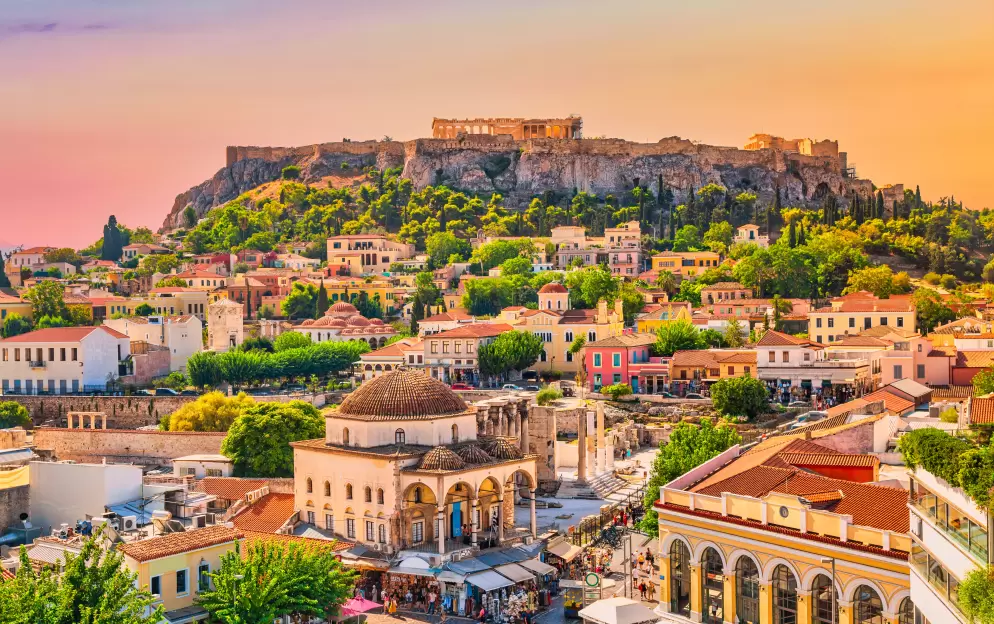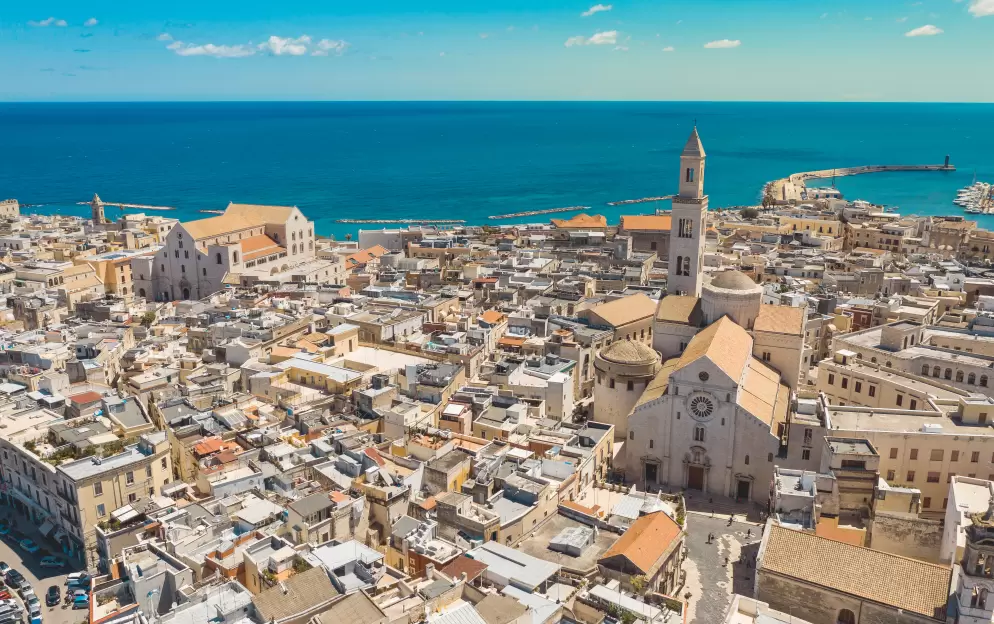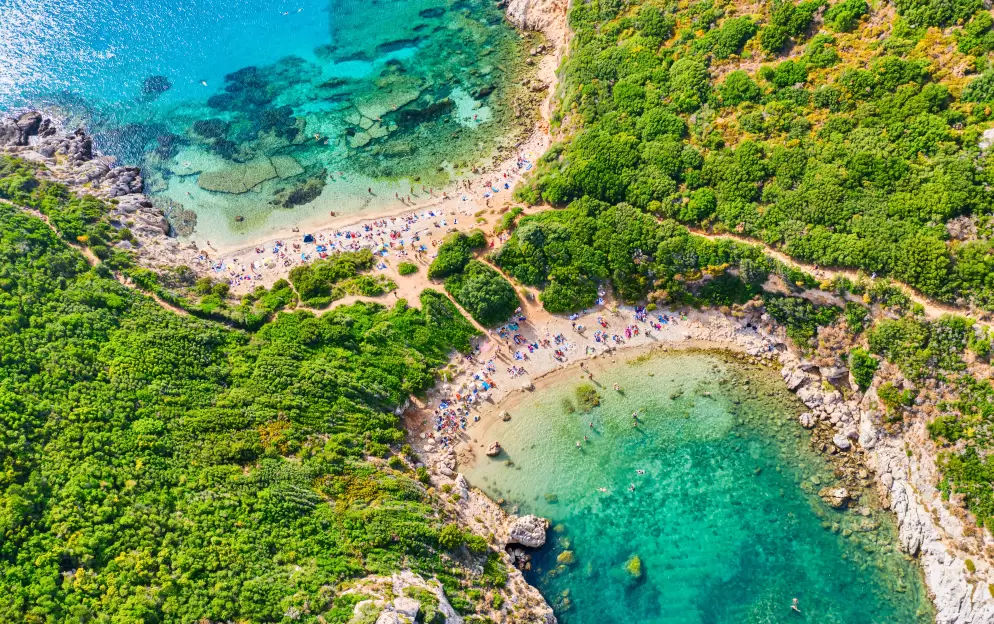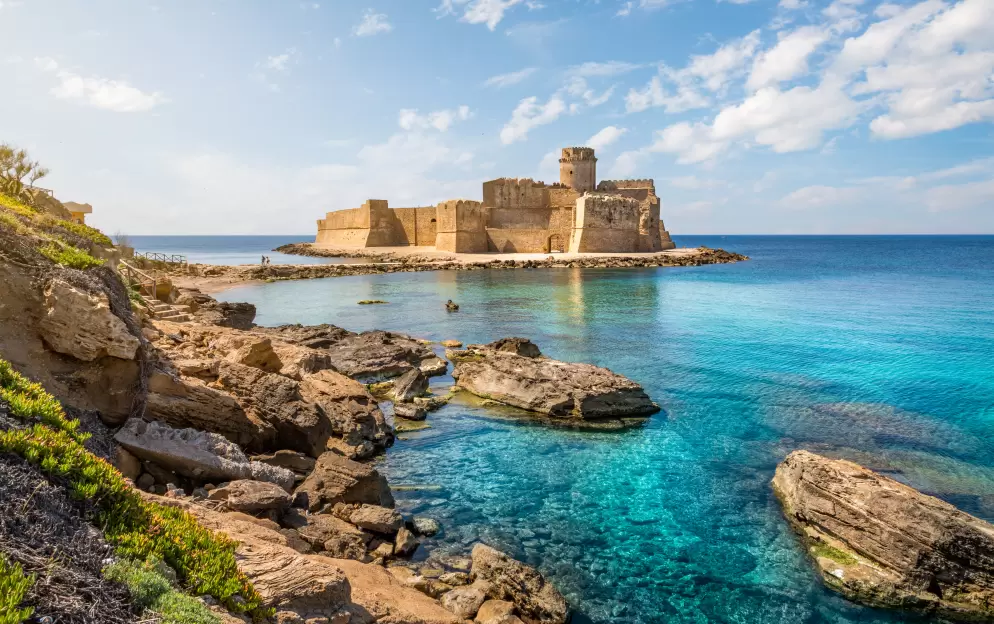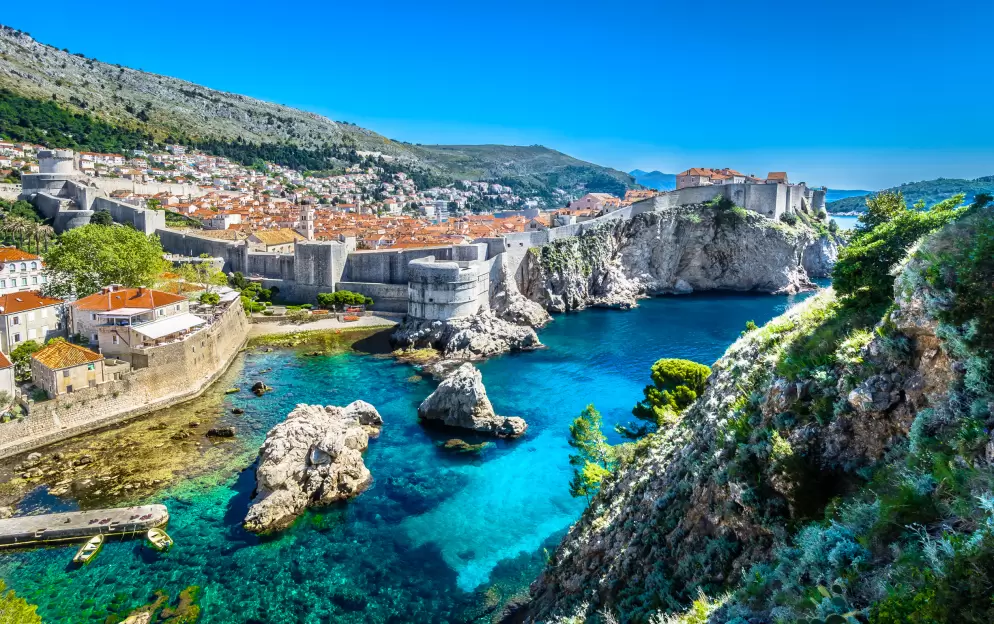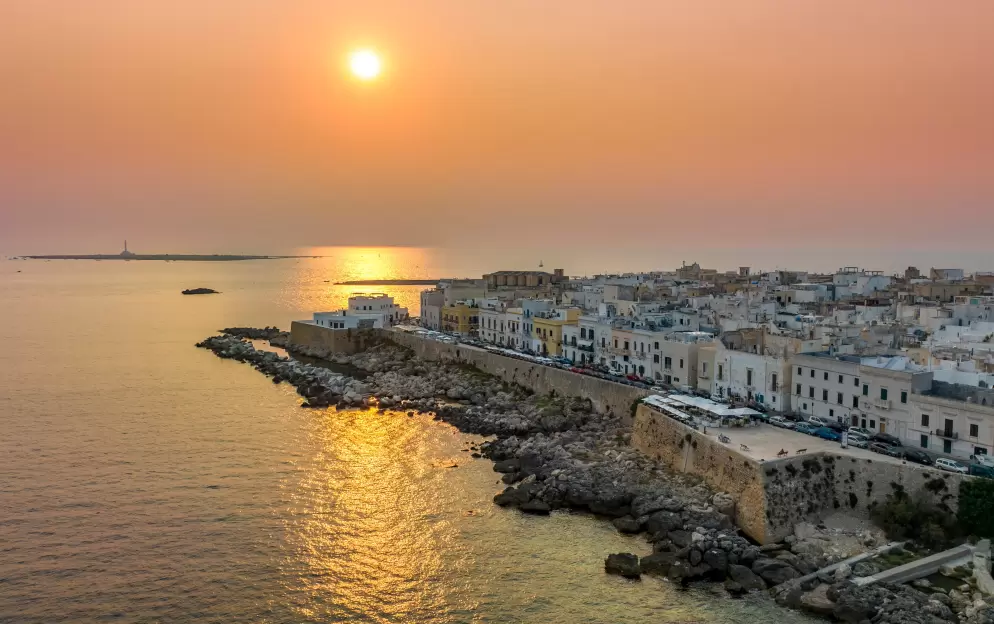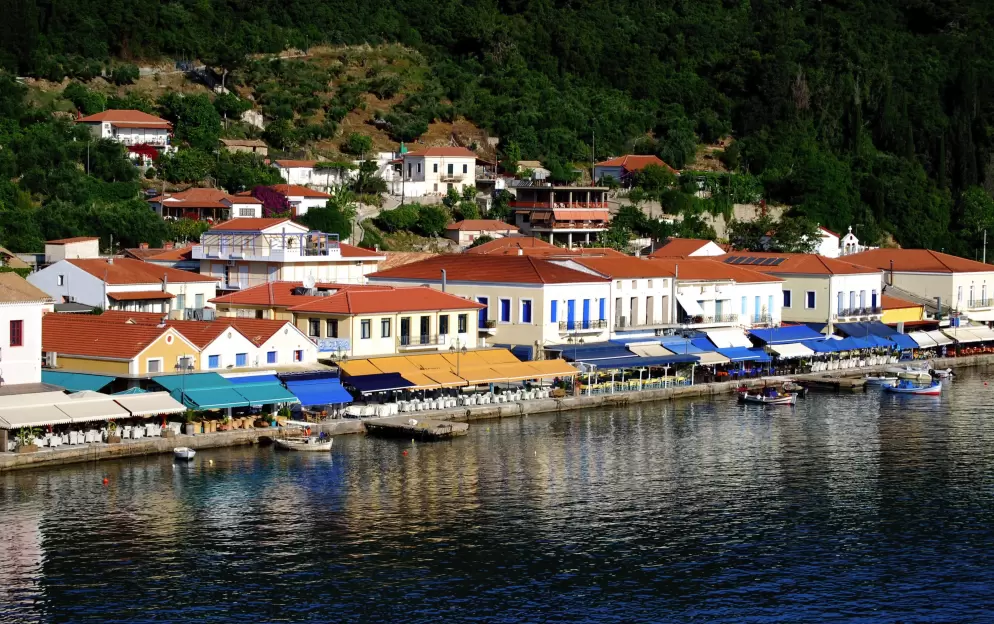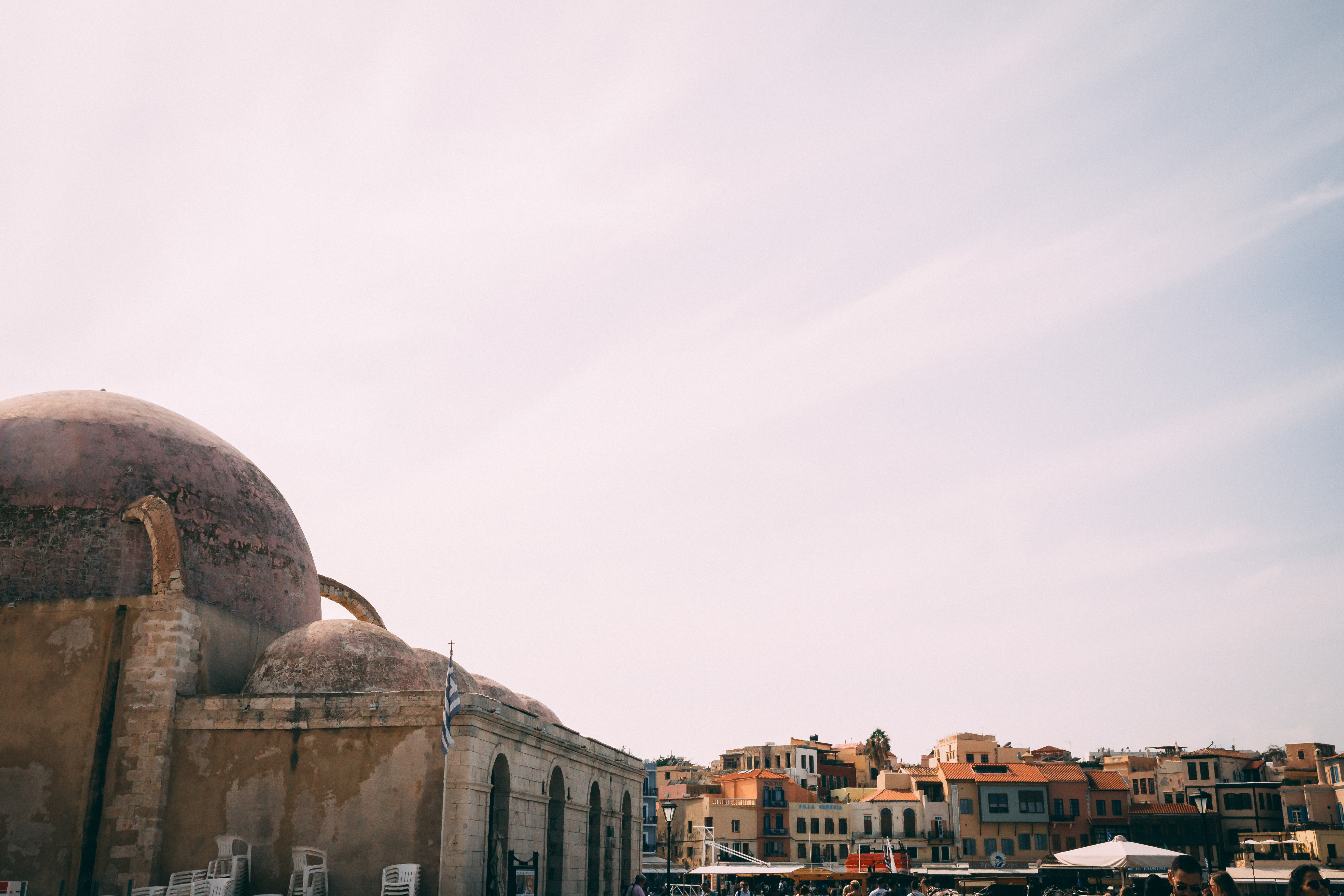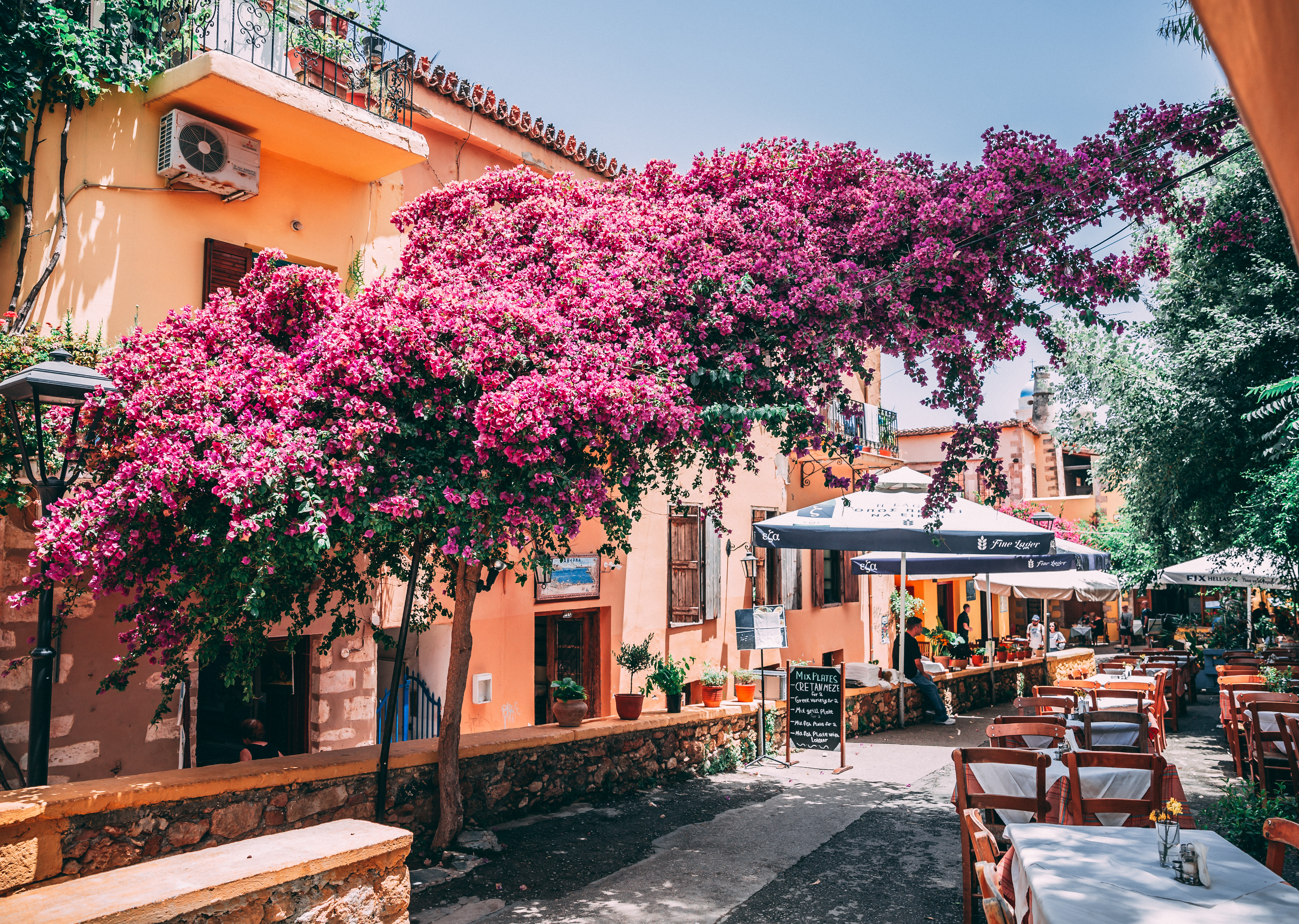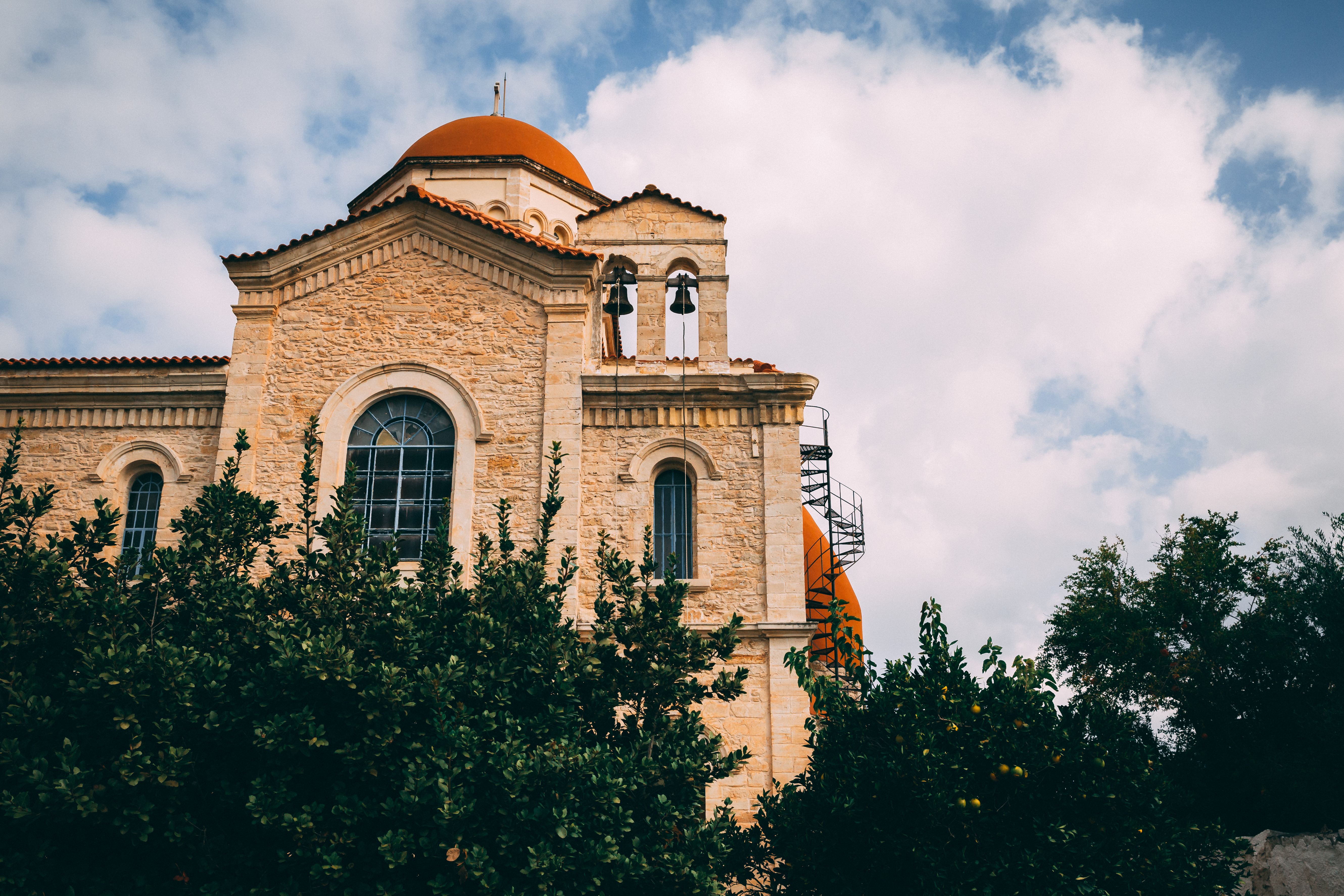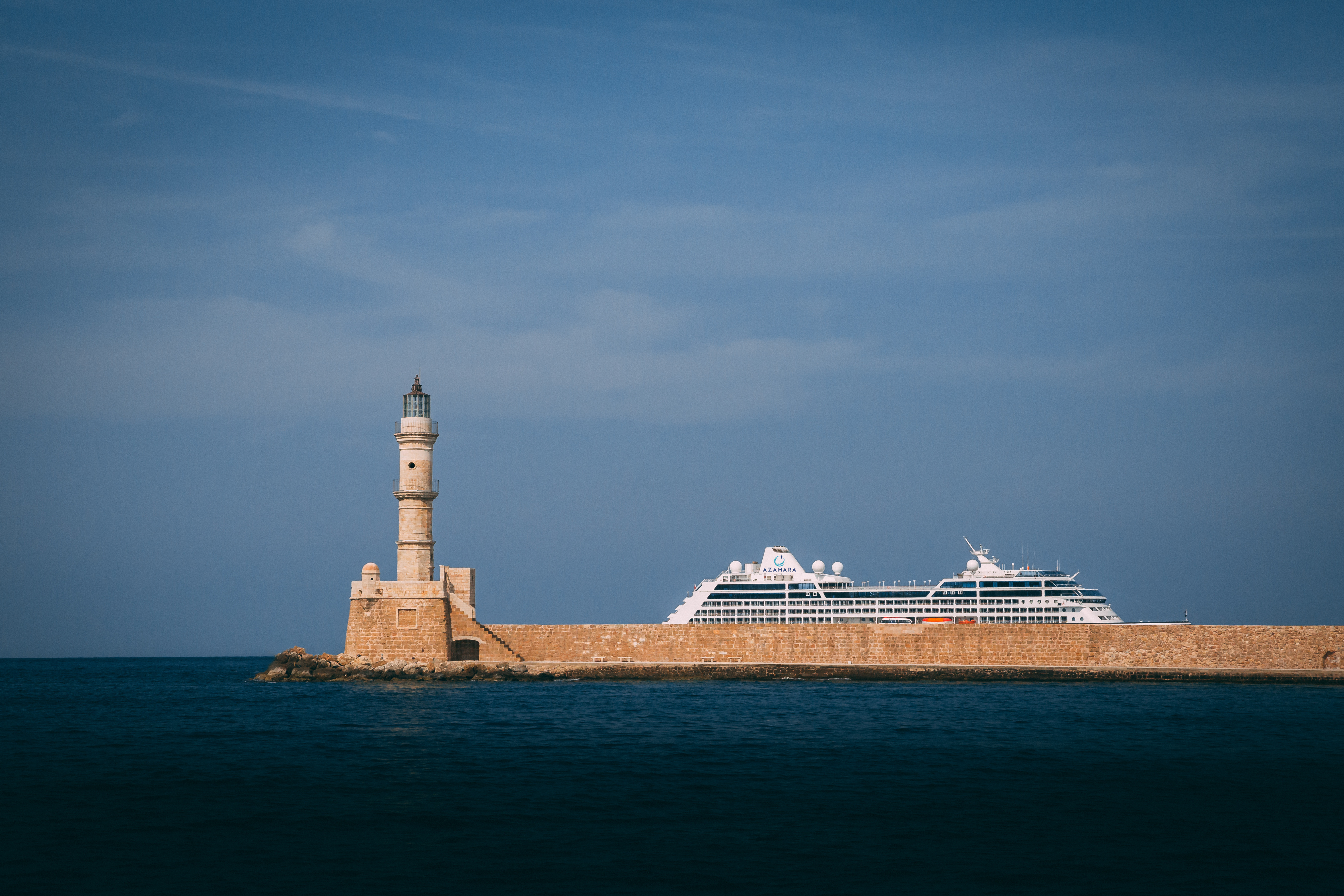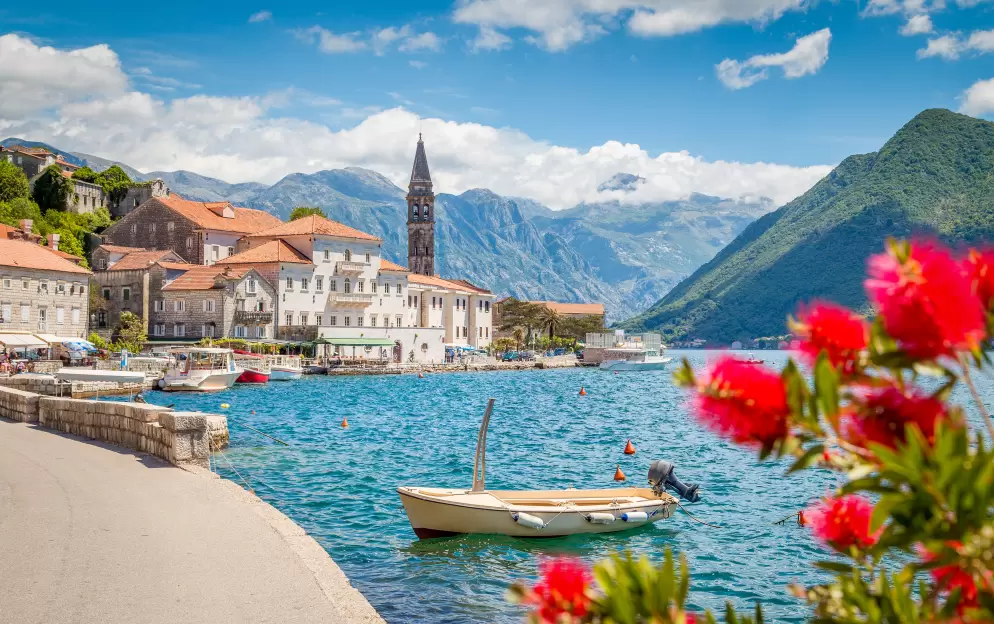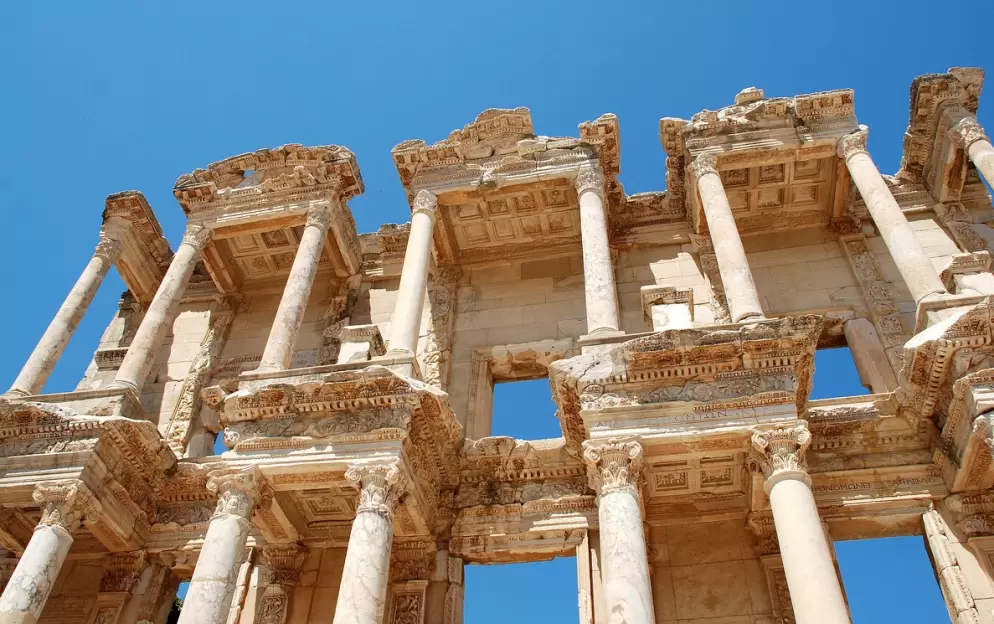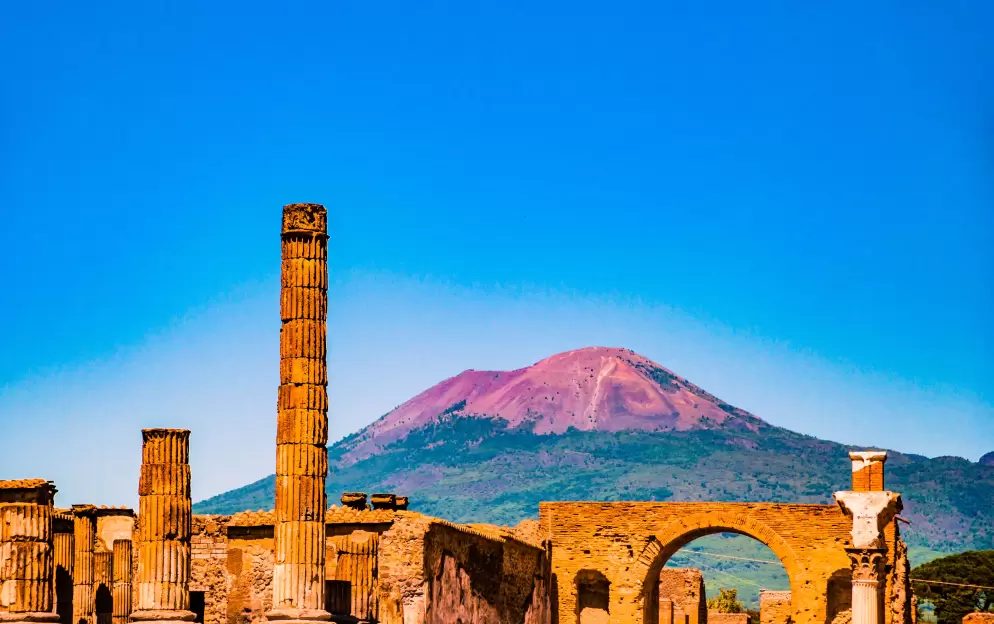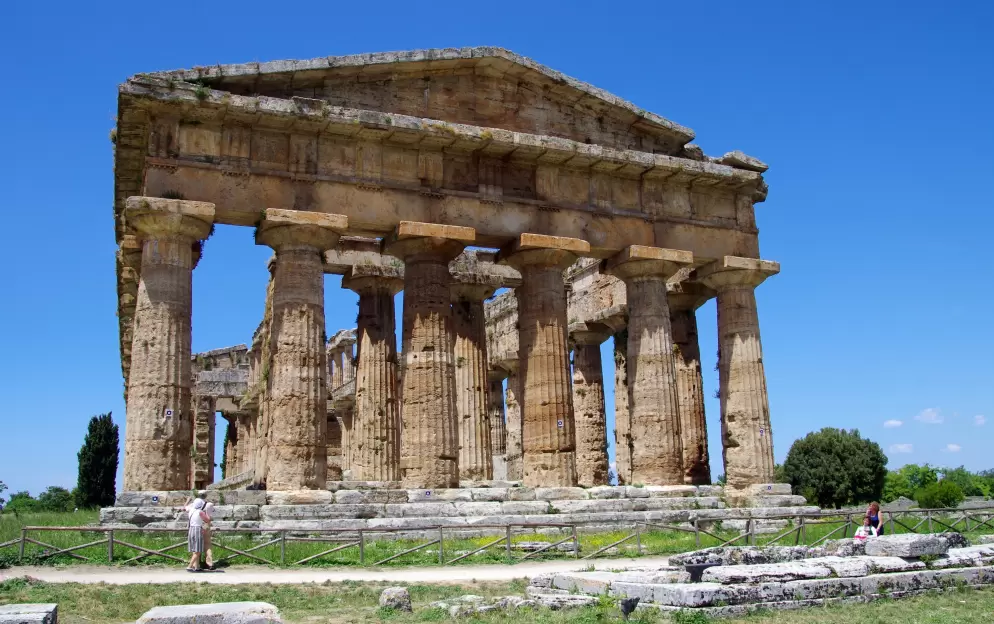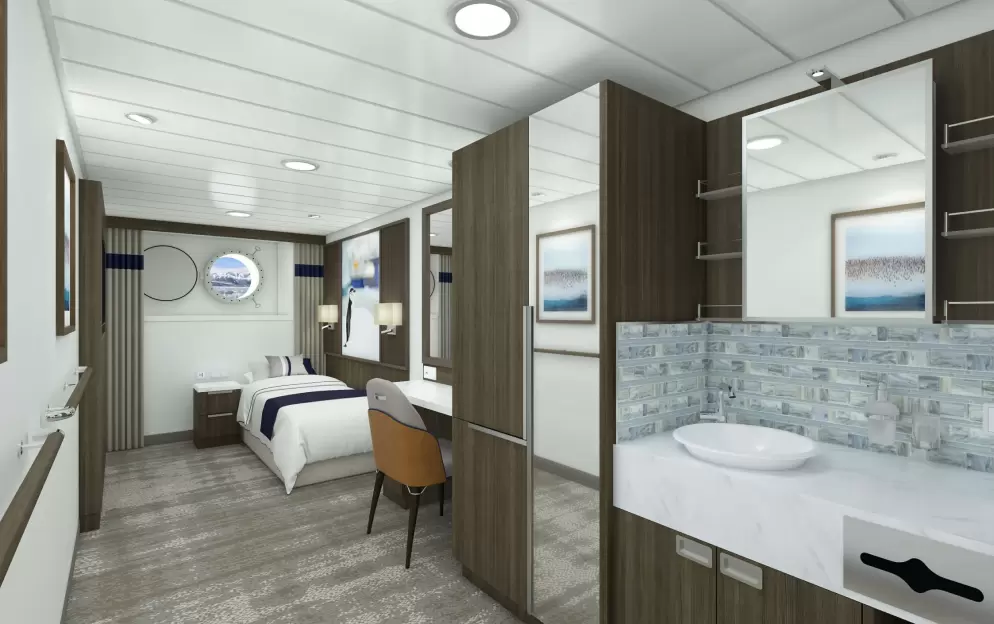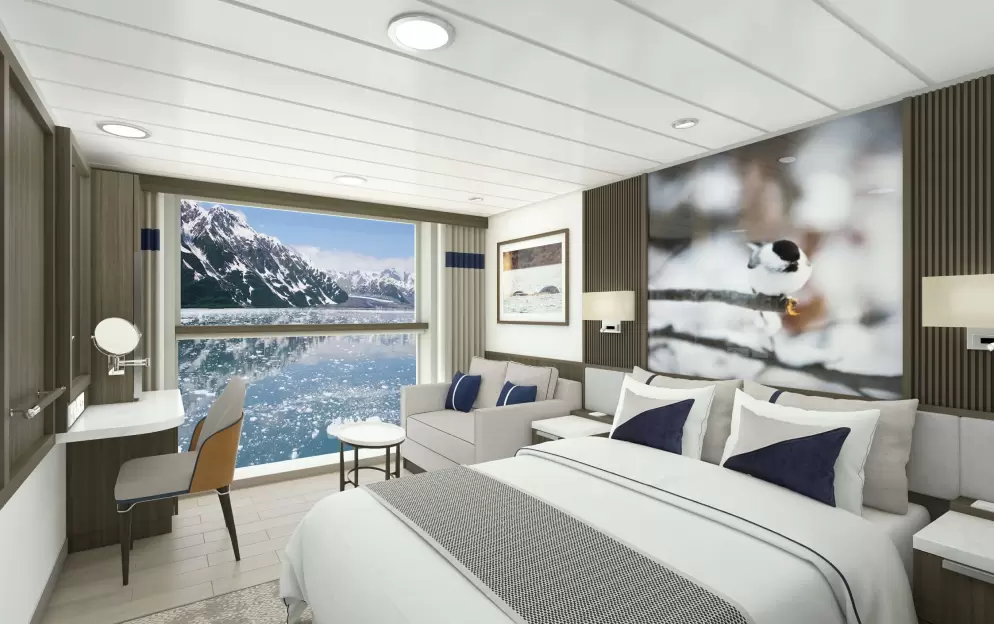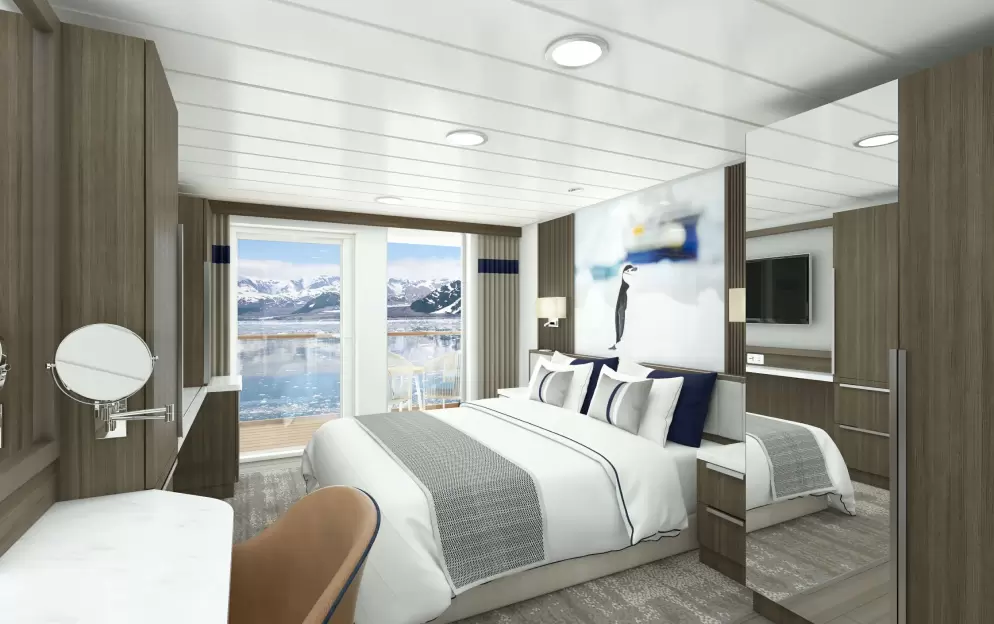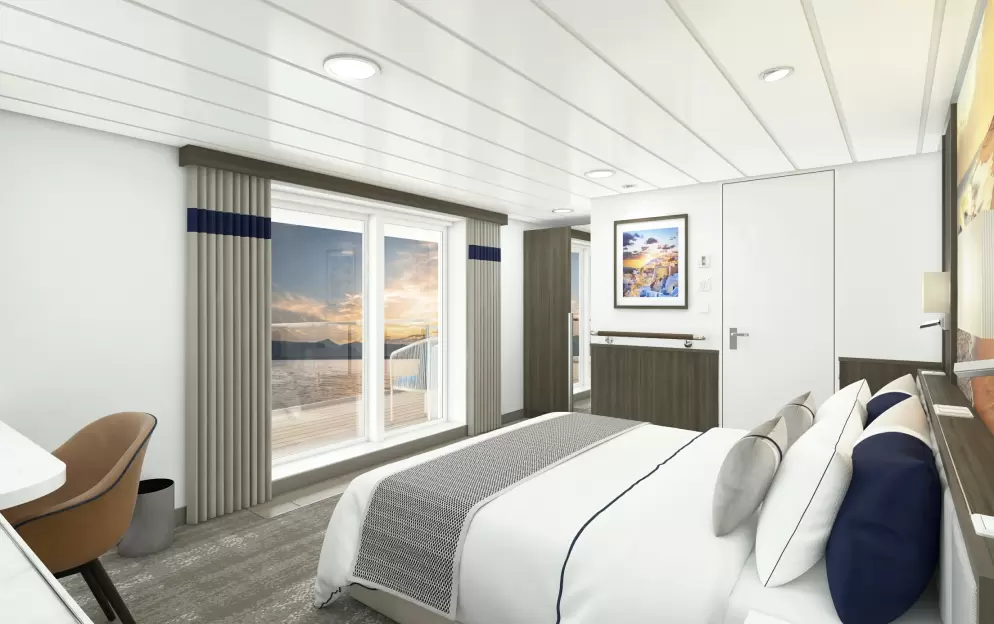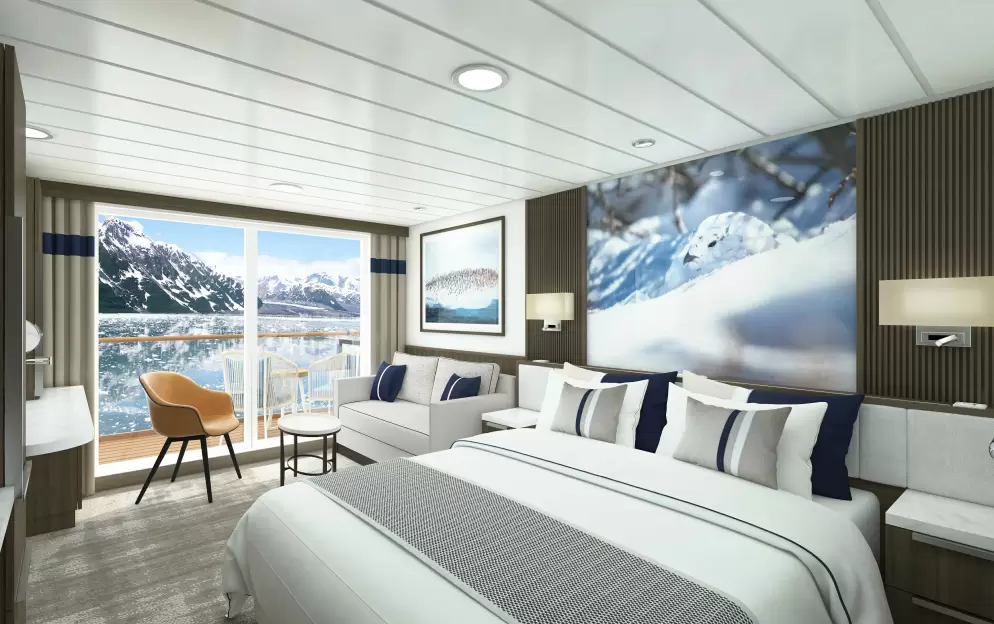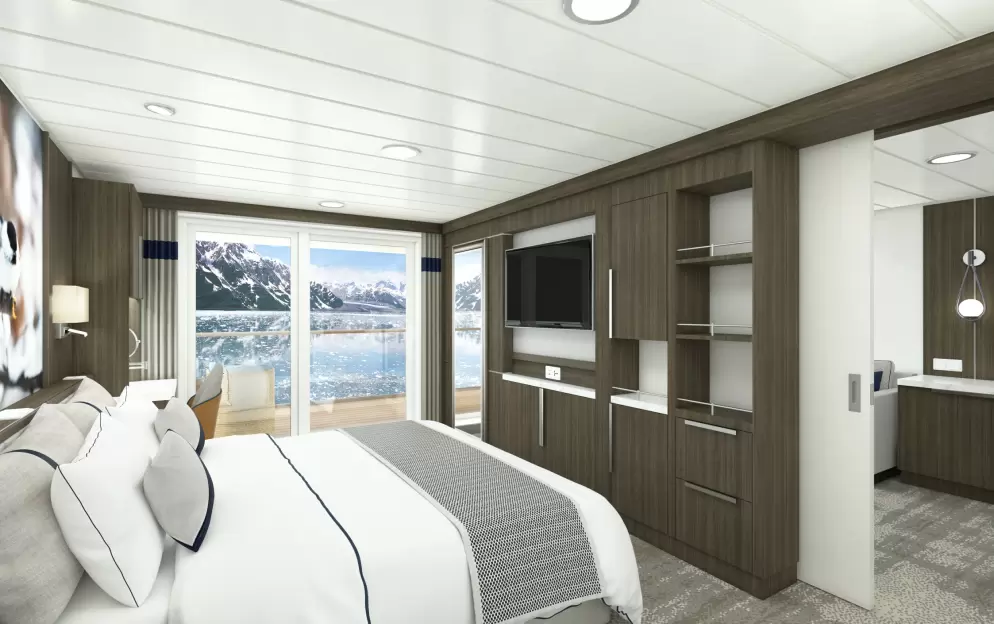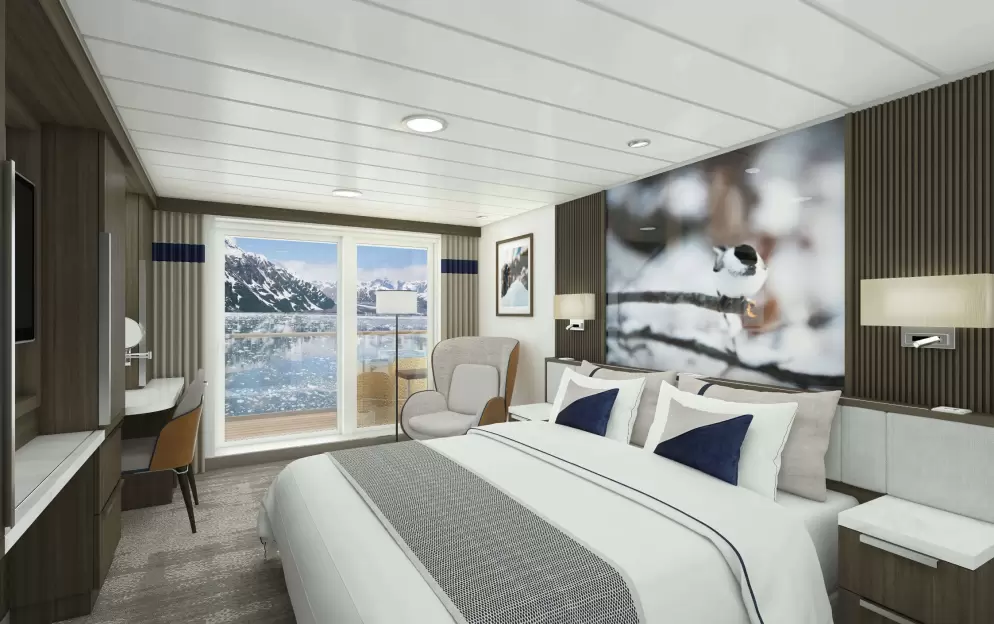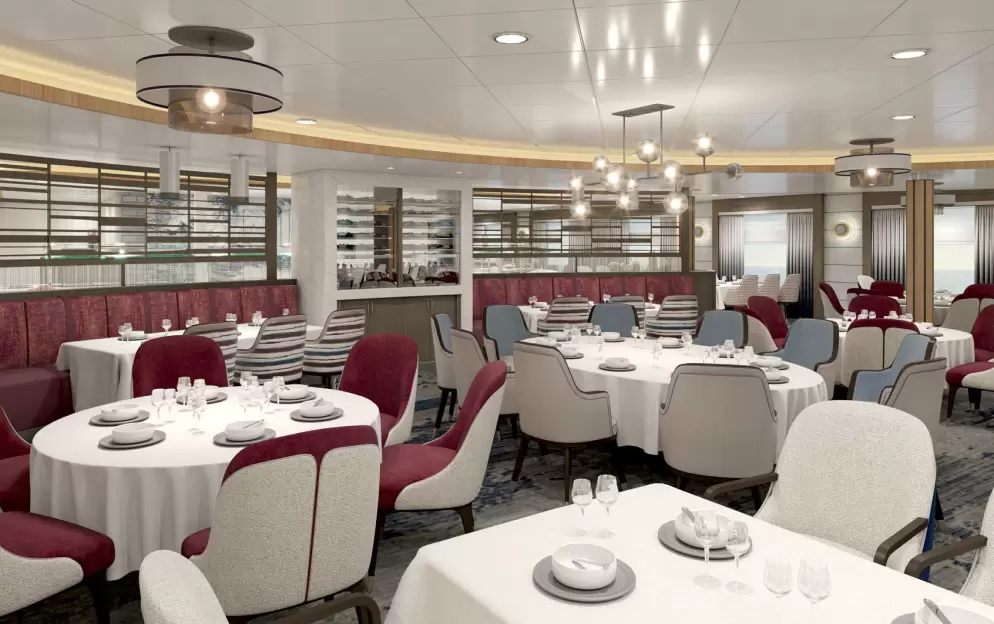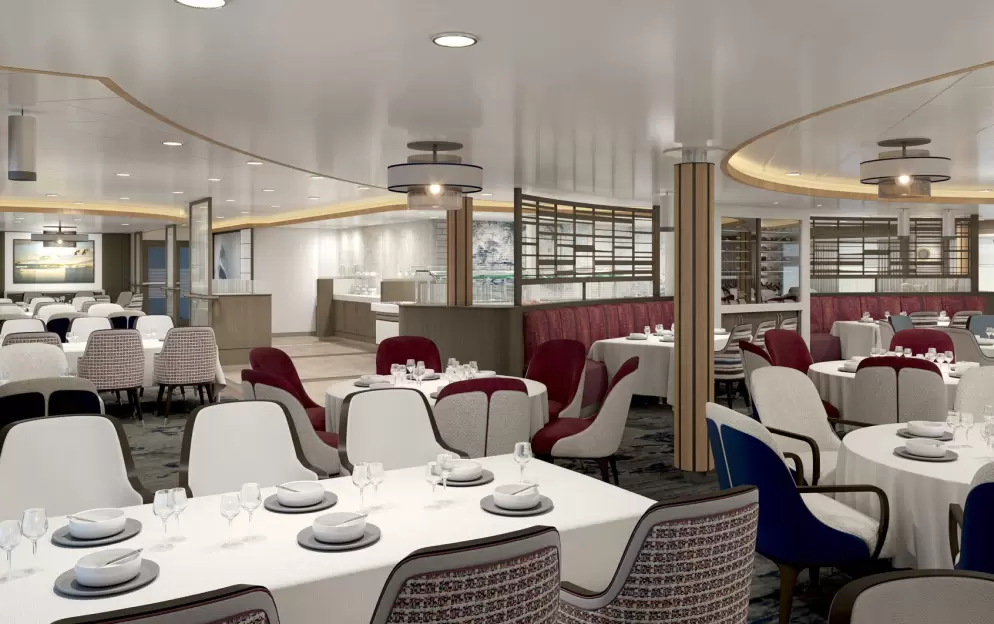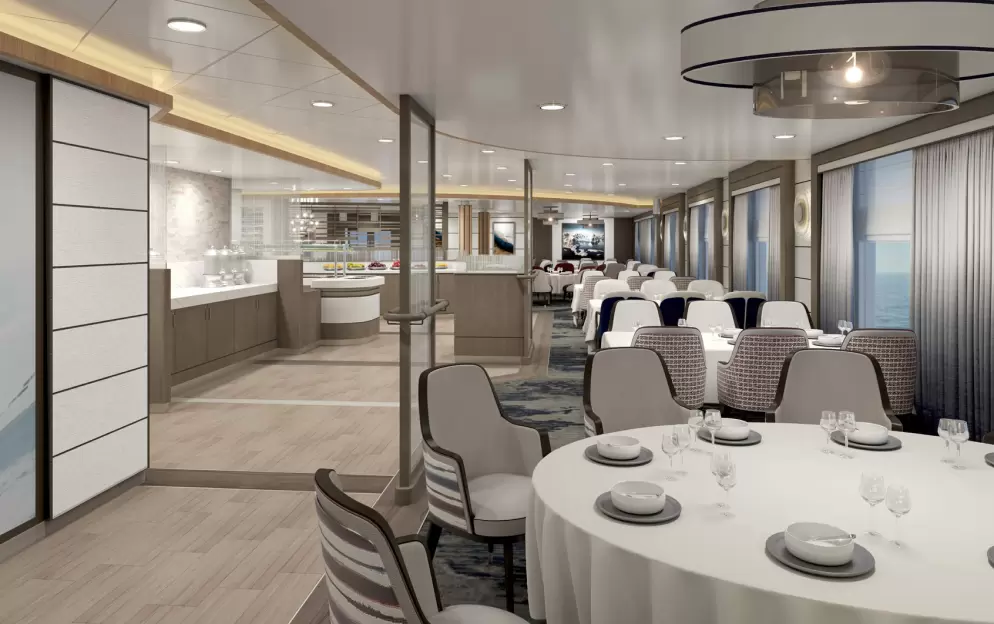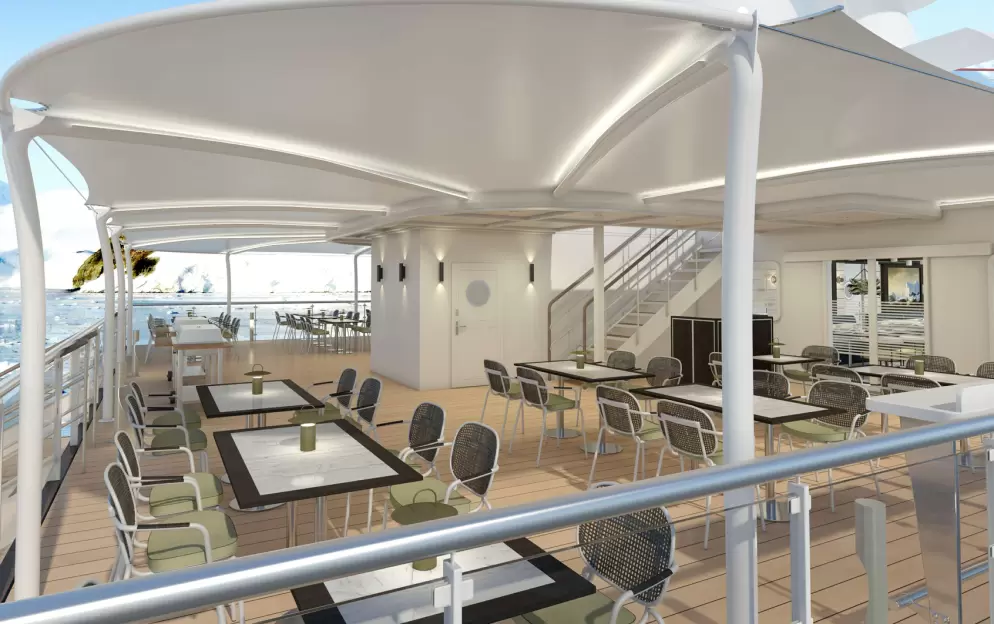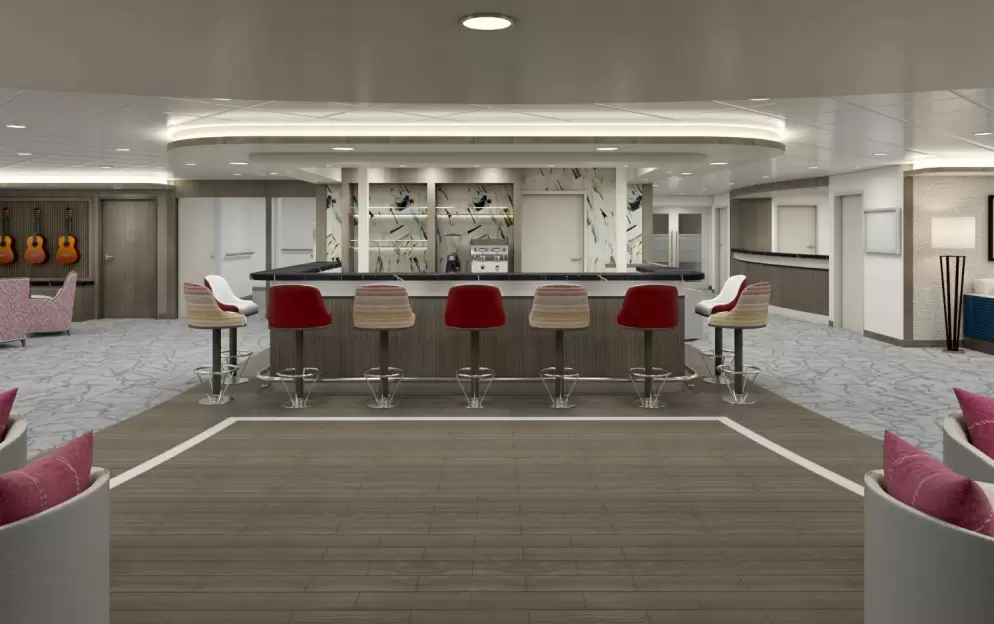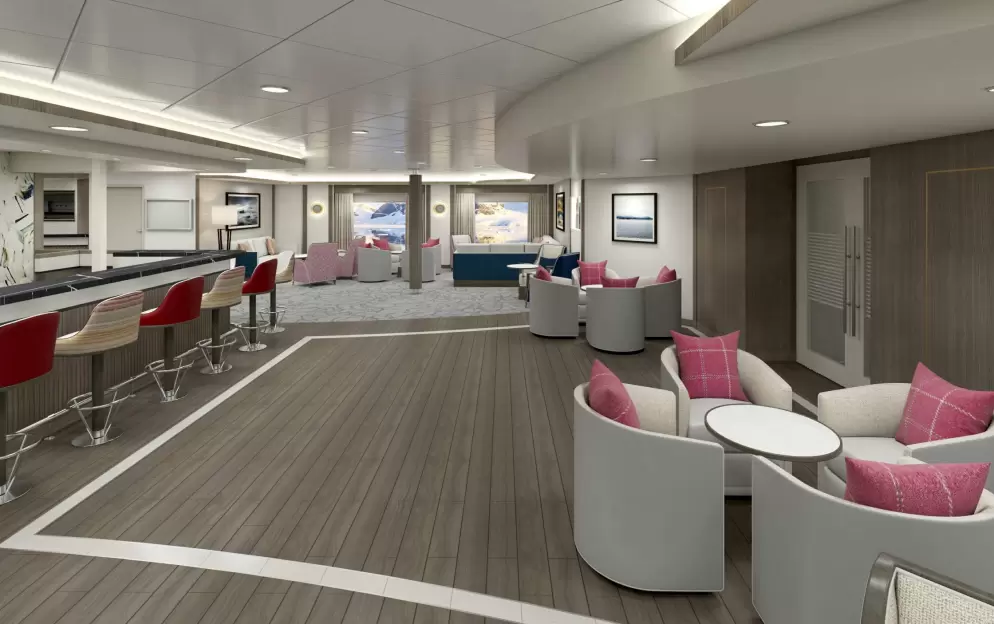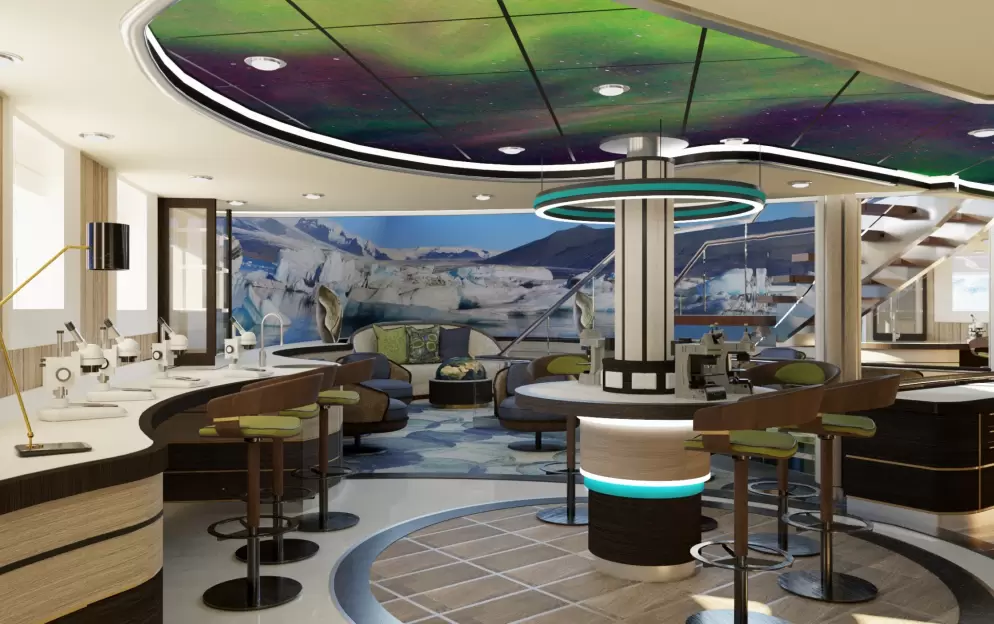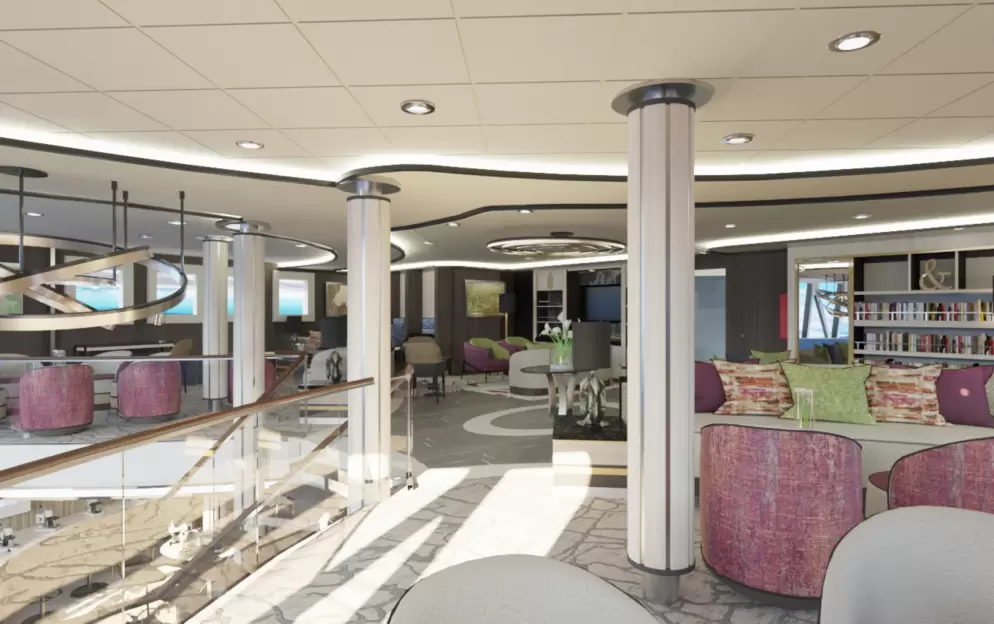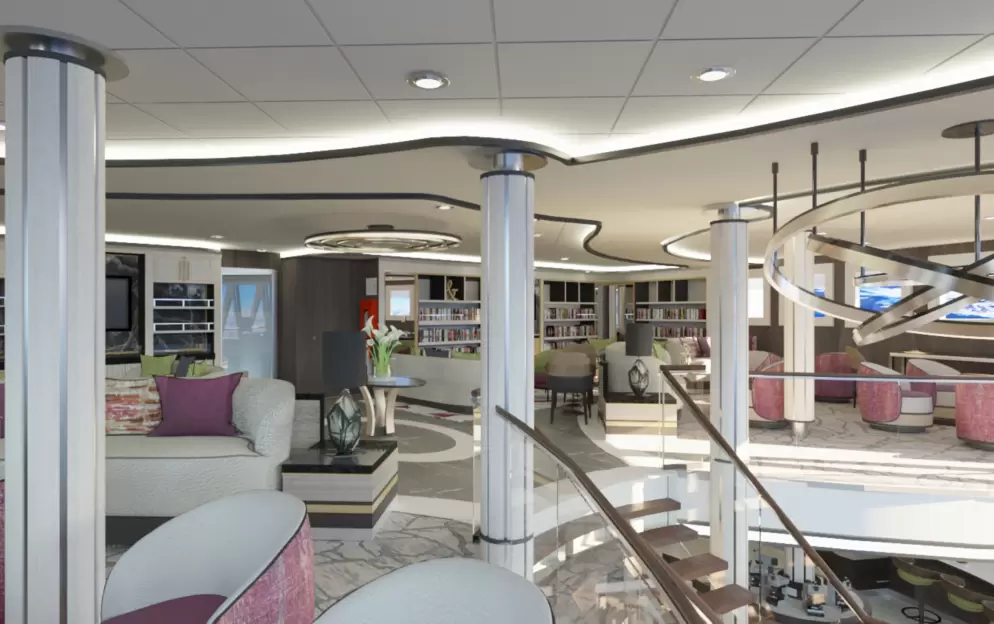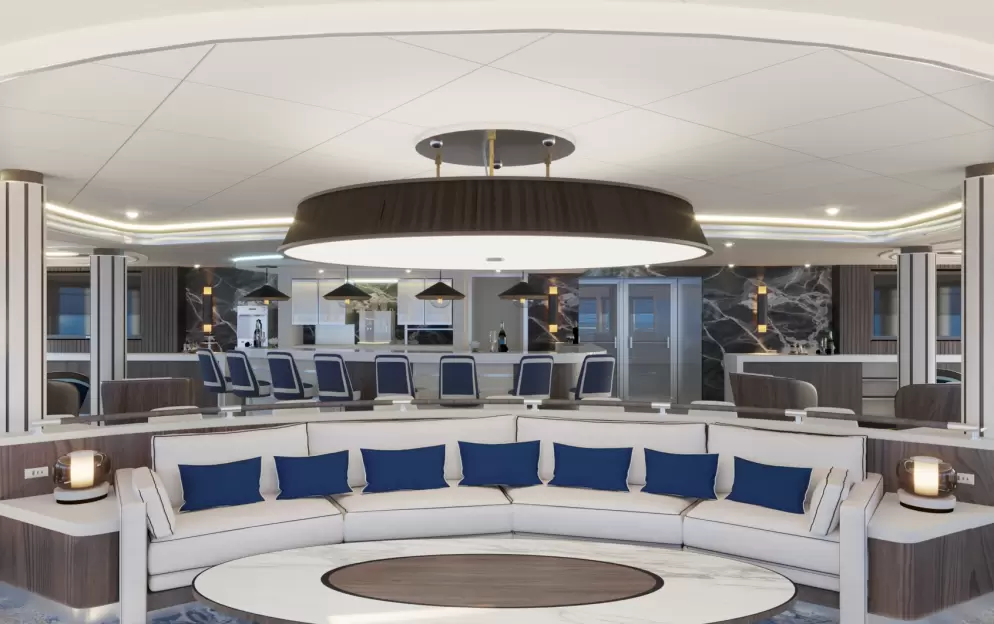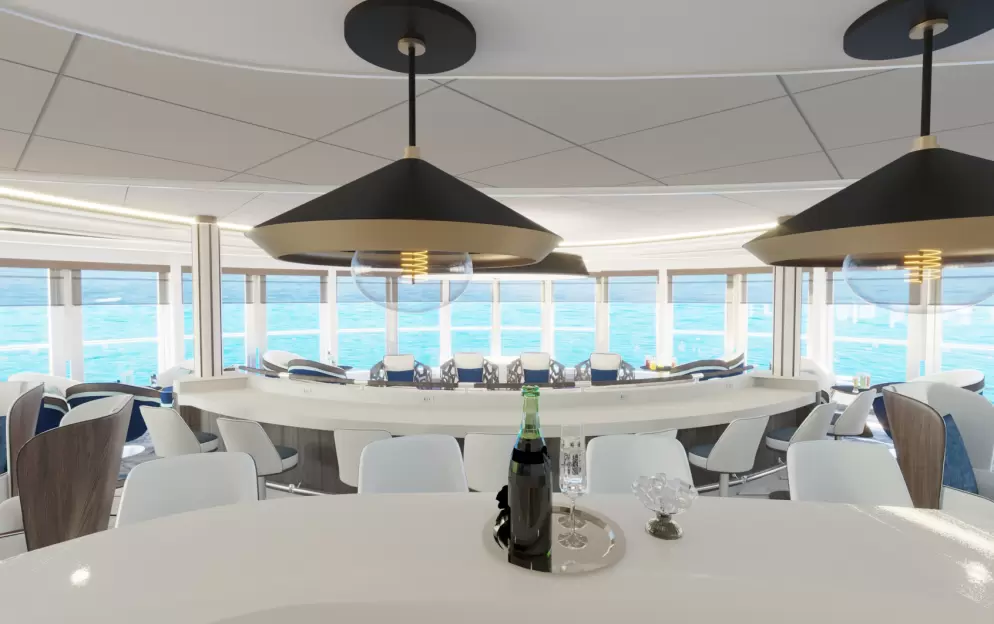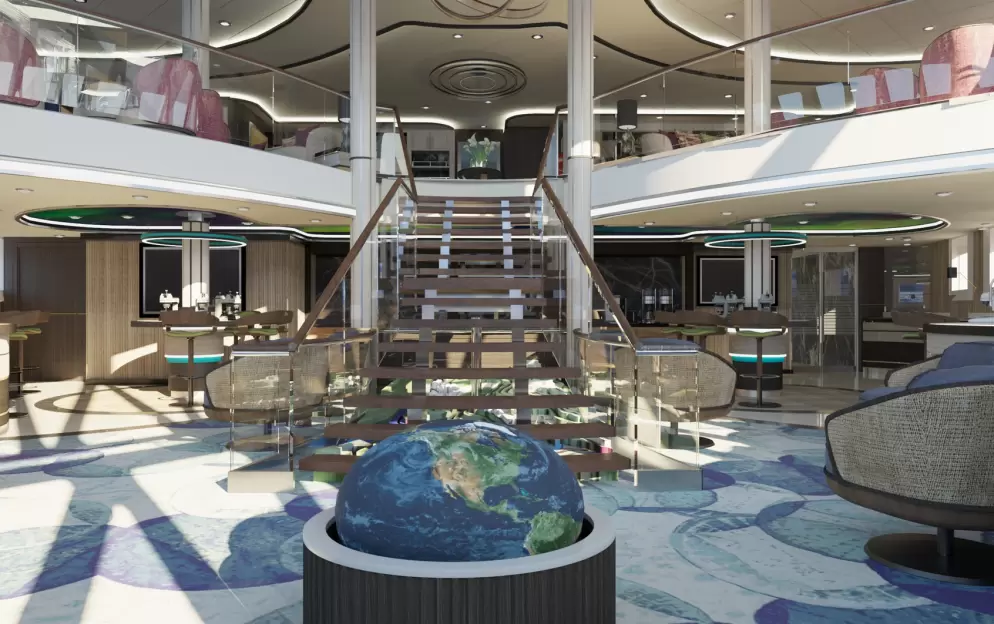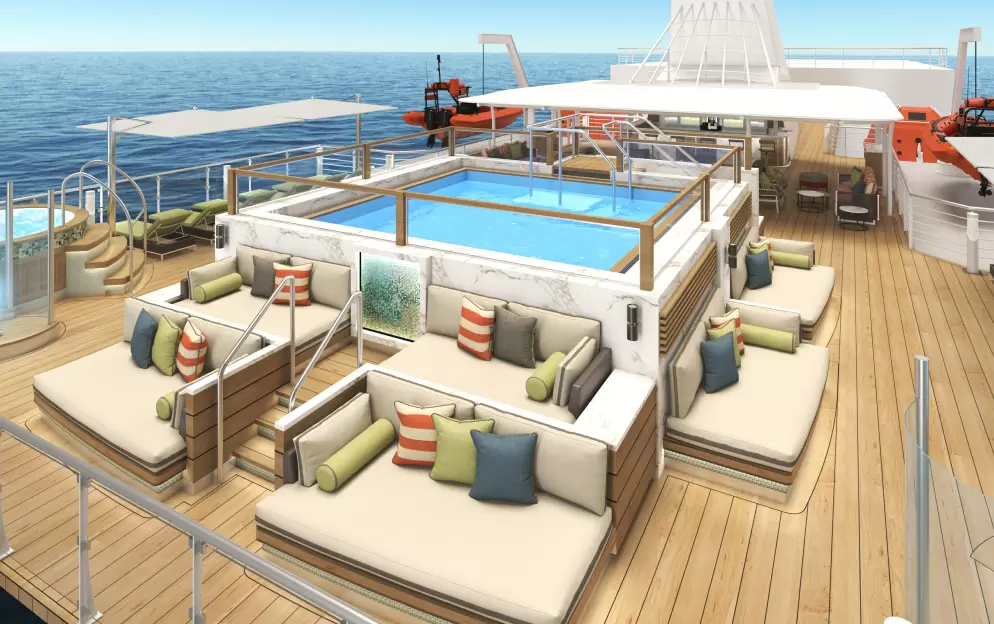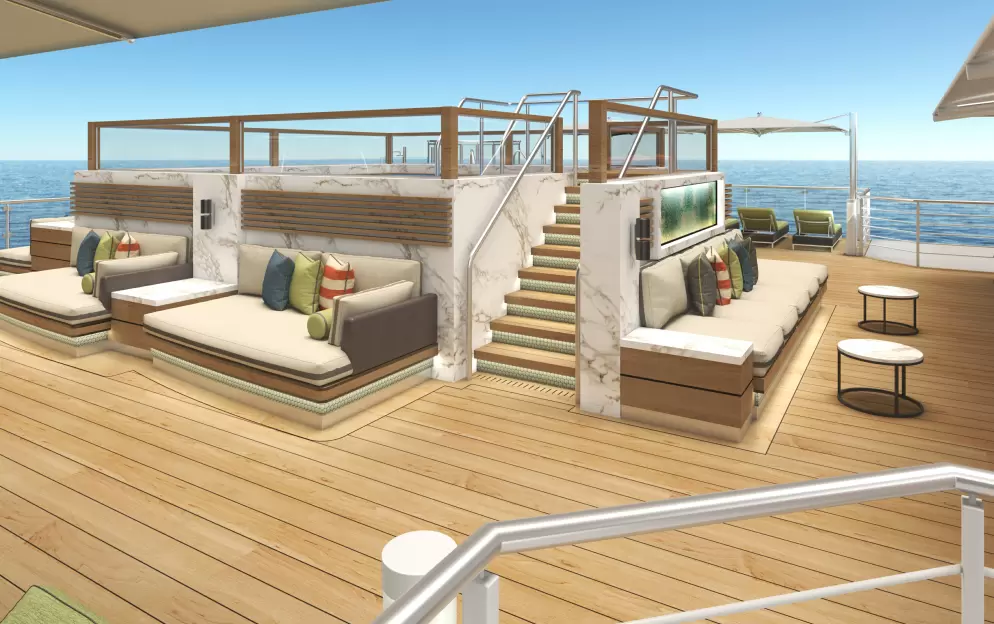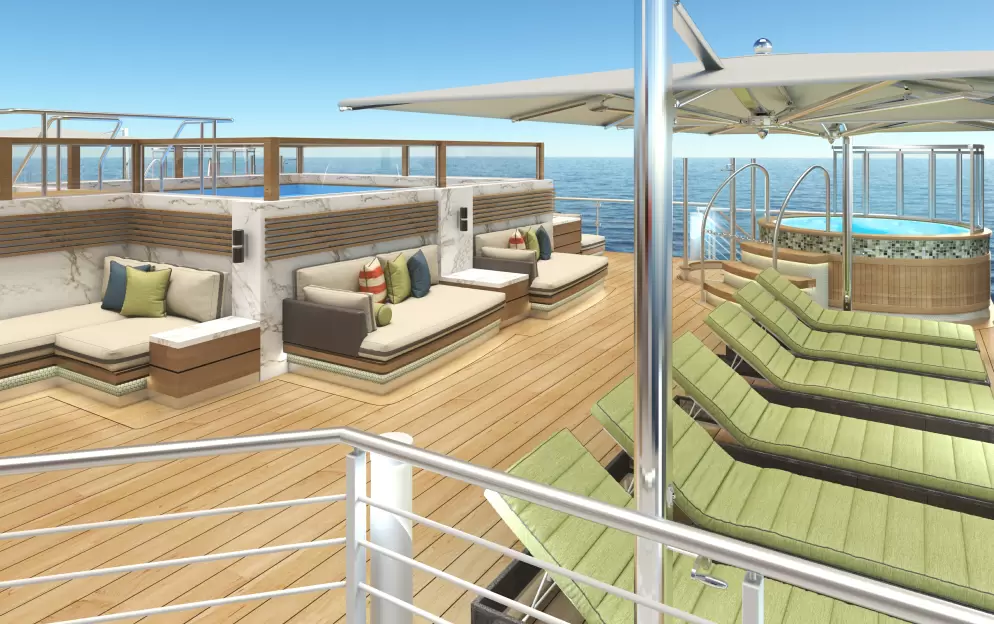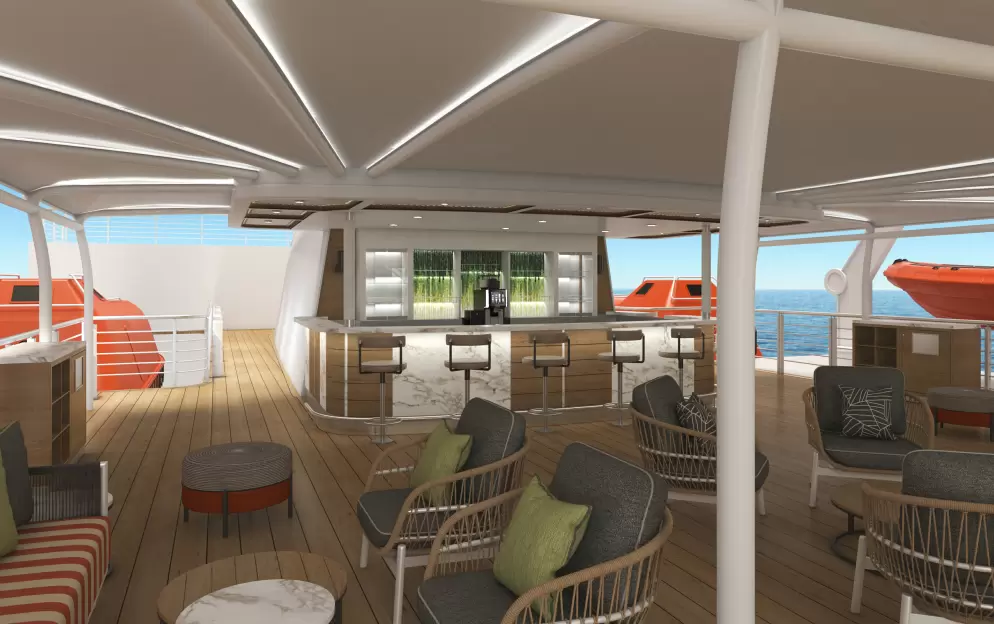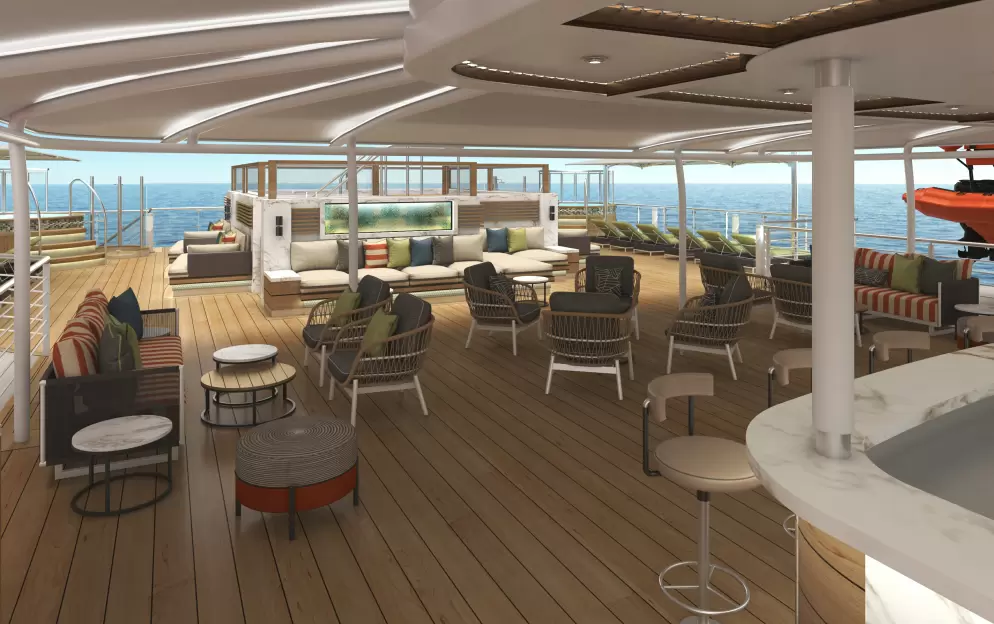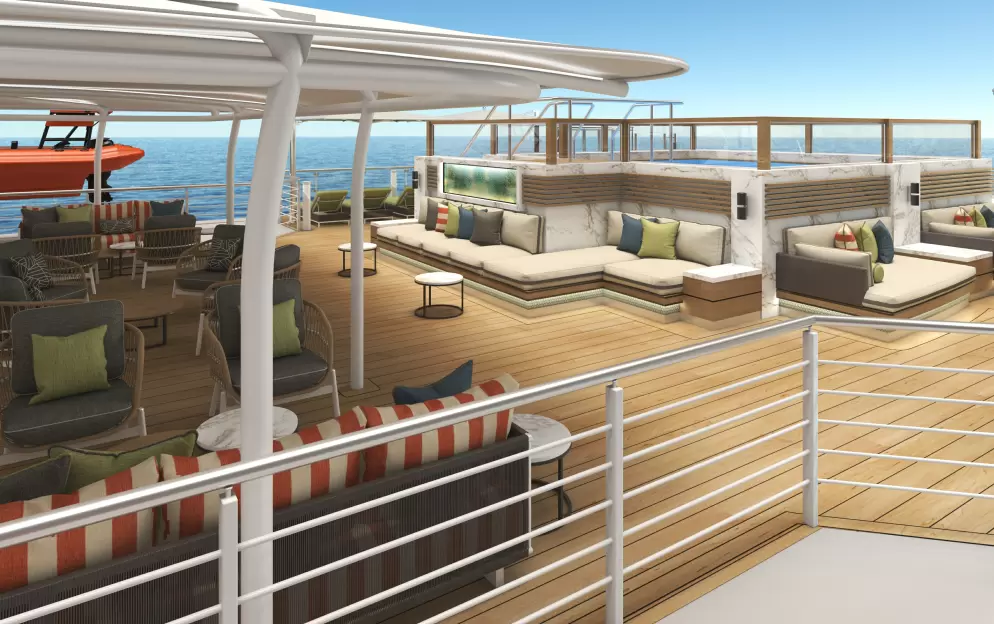Arriving at Santorini, it is easy to see why this iconic island is a favourite among travellers. The sheer cliffs soaring�above the Aegean Sea are awe-inspiring as we cross the immense crater of a submerged volcano that leads to its�shores. Shaped by a cataclysmic eruption 3,600 years ago, Santorini is famed for its striking sunsets and unique�caldera views. Named Thira in ancient times, Santorini has always attracted the curious. Its ancient ruins, including�the Minoan site of Akrotiri, offer a rich cultural heritage reflected in local cuisine, wine production, vibrant festivals,�and artisanal crafts. Whether wandering through the charming streets of Oia or enjoying the unique black sand�beaches, Santorini offers a deeply enriching experience that melds history and natural beauty into the ideal Grecian�Island. We enjoy a day on Santorini, before sailing at sunset.�Personalise your exploration with our included ‘Your Choice’ experiences.�Option 1 – Morning experience: The village of Pygros and Wine Tasting Santorini Style�Ascending Santorini's rocky caldera wall we reach Pyrgos, the highest village on the island, and enjoy breathtaking�vistas. Pyrgos, once the capital of Santorini, preserves its traditional charm with narrow, winding streets,�whitewashed houses, and blue-domed churches. Explore the remains of the Venetian Kasteli, a testament to the�island's medieval period, offering panoramic views of the landscape. Take a guided walking tour through the village's�labyrinthine lanes, discovering its unique charm and rich history. Visit the Church of Theotokaki, one of the island's�oldest churches. Pyrgos' stunning views and historical significance make it a must-visit destination on Santorini.�Afterwards, a short drive takes us to one of the island’s most acclaimed wineries, where we sample the locally�produced wines. Here, we’ll learn about the “kalathies” vines and the unique way locals have been growing grapes�for centuries and explore the cave-like cellars housed in beautiful traditional architecture. Following our wine�tasting, we continue across the island to the capital of Santorini, Fira. Fira boasts fantastic views over the Caldera�and offers an array of tempting boutiques and craft stores. Enjoy leisure time before our cable car ride takes us from�Fira to the port below, where we tender back to our ship.�Option 2 – Morning experience: Akotiri, Fira and the village of Oia�Setting off from the port of Athinios, we drive to the ancient site of Akrotiri. This Bronze Age settlement, destroyed�by a massive eruption in the 17th century BC, was buried under volcanic ash, which remarkably preserved the entire�city. The people of Akrotiri were advanced for their time, with a well-organised society evidenced by their�sophisticated infrastructure, vibrant frescoes, and complex urban layout. Its inhabitants had a high standard of living,�with access to imported goods from across the Mediterranean. The ruins remained hidden until 1860, when workers�quarrying volcanic ash for the Suez Canal uncovered them. The discovery of their homes and artifacts provides�valuable insights into their daily lives and societal structure.�Next, our coach takes us to the picturesque village of Oia, home to around 1,000 residents. This charming village is�renowned for its immaculate, white-washed houses and blue-domed churches. The residents here live a relaxed and�traditional lifestyle surrounded by stunning views across the Aegean. You will have free time to capture stunning�photos and explore the quaint streets before we continue to the capital town of Fira, where we wander its narrow�alleyways at leisure, before our tour ends with a scenic cable car ride from Fira down to the port, where our tender�awaits.
Undoubtedly the most extraordinary island in the Aegean, crescent-shape Santorini remains a mandatory stop on the Cycladic tourist route—even if it's necessary to enjoy the sensational sunsets from Ia, the fascinating excavations, and the dazzling white towns with a million other travelers. Called Kállisti (the "Loveliest") when first settled, the island has now reverted to its subsequent name of Thira, after the 9th-century-BC Dorian colonizer Thiras. The place is better known, however, these days as Santorini, a name derived from its patroness, St. Irene of Thessaloniki, the Byzantine empress who restored icons to Orthodoxy and died in 802. You can fly conveniently to Santorini, but to enjoy a true Santorini rite of passage, opt instead for the boat trip here, which provides a spectacular introduction. After the boat sails between Sikinos and Ios, your deck-side perch approaches two close islands with a passage between them. The bigger one on the left is Santorini, and the smaller on the right is Thirassia. Passing between them, you see the village of Ia adorning Santorini's northernmost cliff like a white geometric beehive. You are in the caldera (volcanic crater), one of the world's truly breathtaking sights: a demilune of cliffs rising 1,100 feet, with the white clusters of the towns of Fira and Ia perched along the top. The bay, once the high center of the island, is 1,300 feet in some places, so deep that when boats dock in Santorini's shabby little port of Athinios, they do not drop anchor. The encircling cliffs are the ancient rim of a still-active volcano, and you are sailing east across its flooded caldera. On your right are the Burnt isles, the White isle, and other volcanic remnants, all lined up as if some outsize display in a geology museum. Hephaestus's subterranean fires smolder still—the volcano erupted in 198 BC, about 735, and there was an earthquake in 1956. Indeed, Santorini and its four neighboring islets are the fragmentary remains of a larger landmass that exploded about 1600 BC: the volcano's core blew sky high, and the sea rushed into the abyss to create the great bay, which measures 10 km by 7 km (6 mi by 4½ mi) and is 1,292 feet deep. The other pieces of the rim, which broke off in later eruptions, are Thirassia, where a few hundred people live, and deserted little Aspronissi ("White isle"). In the center of the bay, black and uninhabited, two cones, the Burnt Isles of Palea Kameni and Nea Kameni, appeared between 1573 and 1925. There has been too much speculation about the identification of Santorini with the mythical Atlantis, mentioned in Egyptian papyri and by Plato (who says it's in the Atlantic), but myths are hard to pin down. This is not true of old arguments about whether tidal waves from Santorini's cataclysmic explosion destroyed Minoan civilization on Crete, 113 km (70 mi) away. The latest carbon-dating evidence, which points to a few years before 1600 BC for the eruption, clearly indicates that the Minoans outlasted the eruption by a couple of hundred years, but most probably in a weakened state. In fact, the island still endures hardships: since antiquity, Santorini has depended on rain collected in cisterns for drinking and irrigating—the well water is often brackish—and the serious shortage is alleviated by the importation of water. However, the volcanic soil also yields riches: small, intense tomatoes with tough skins used for tomato paste (good restaurants here serve them); the famous Santorini fava beans, which have a light, fresh taste; barley; wheat; and white-skin eggplants.








